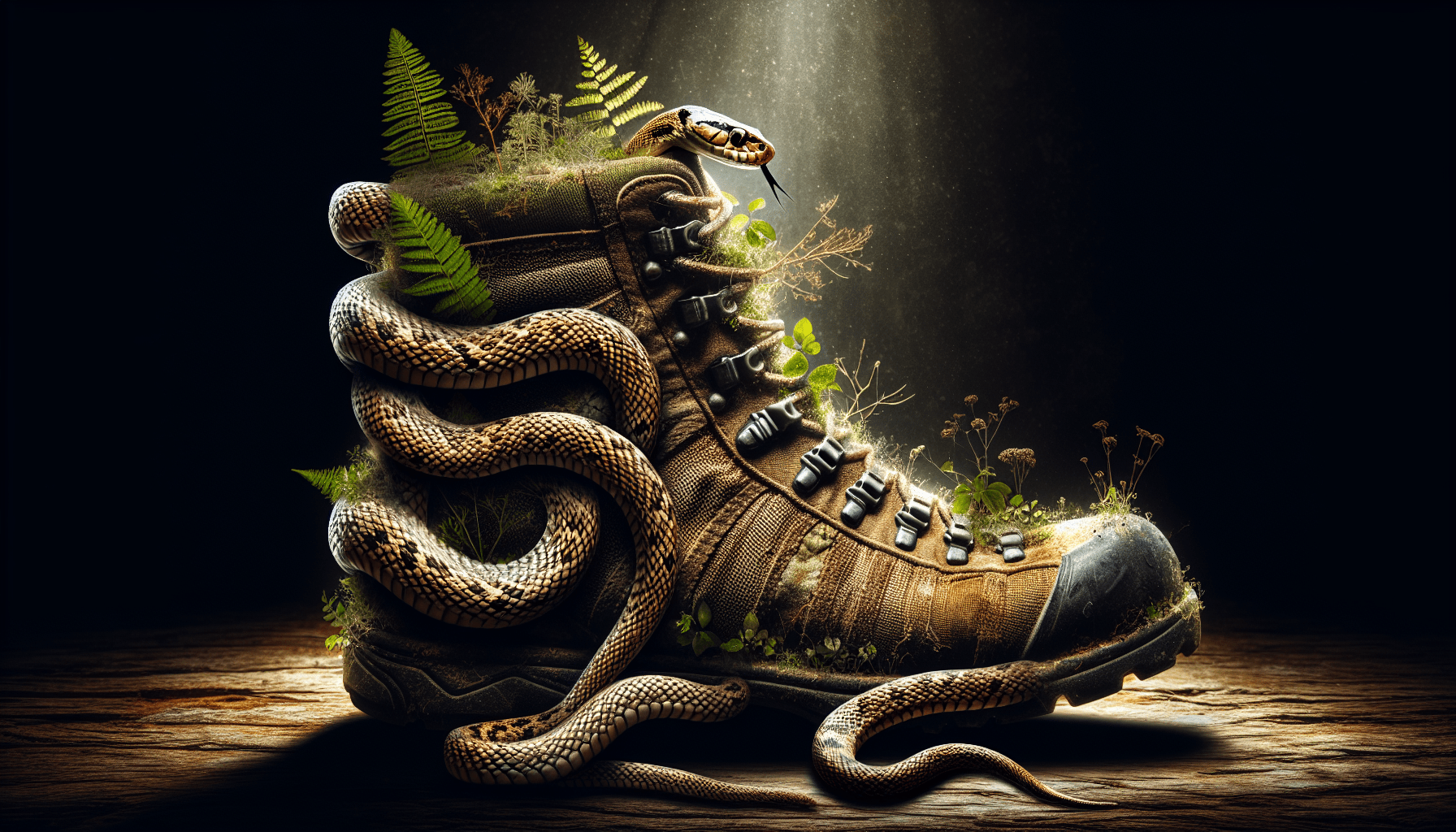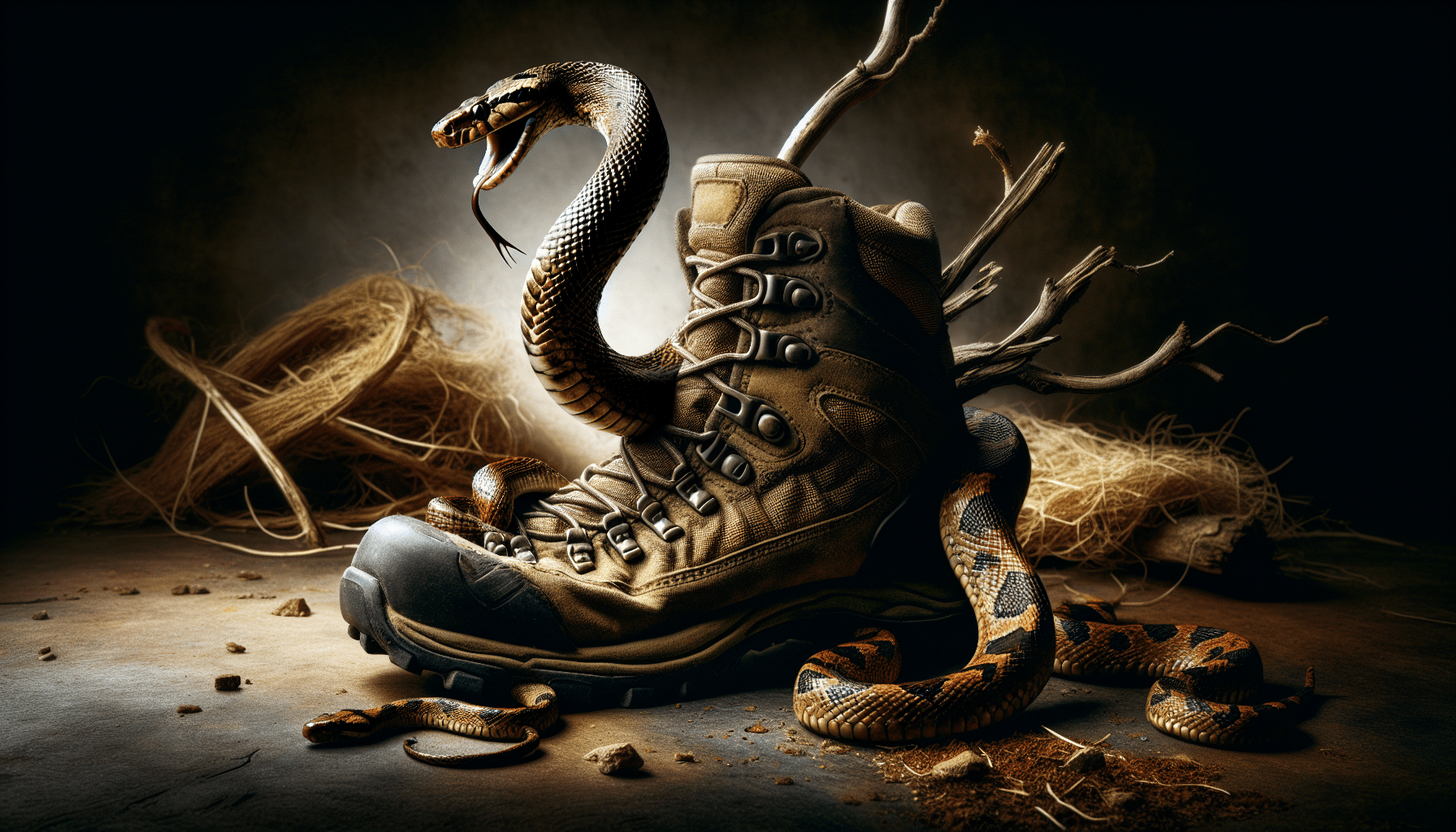Imagine you’re out hiking in the wilderness, enjoying the beauty of nature surrounding you. Suddenly, you find yourself face-to-face with a venomous snake, and it strikes, sinking its fangs into your leg. Panic sets in, but don’t worry, because in this article, you’ll learn all about how to treat snake bites in the wild. Whether you’re an avid adventurer or simply want to be prepared for any unexpected encounters, these essential tips and techniques will equip you with the knowledge to handle snake bites with confidence. From identifying venomous snakes to administering first aid, this article will guide you through the necessary steps for surviving snake bites in the wild. So read on, and be ready to conquer any snake bite situation you may find yourself in.

Identify the Snake
Recognize venomous snakes
When encountering a snake bite, the first step is to identify whether the snake is venomous or non-venomous. This knowledge will help determine the appropriate course of action. Venomous snakes possess distinct characteristics, such as triangular-shaped heads, vertical pupils, and pits between their eyes and nose. Common venomous snake species include rattlesnakes, copperheads, and coral snakes.
Differentiate between venomous and non-venomous snakes
It is crucial to know the difference between venomous and non-venomous snakes. Non-venomous snakes usually have rounder heads, round pupils, and lack the pits found in venomous snakes. Additionally, non-venomous snakes often have a more docile temperament and rarely display aggressive behavior. However, it is best to err on the side of caution and treat all snake bites seriously until the snake has been positively identified.
Stay Calm and Control the Patient
Maintain calmness
Remaining calm is key when dealing with a snake bite. Panicking will only elevate the patient’s anxiety, potentially increasing their heart rate and promoting venom spread throughout the body. Assure the patient that you will take proper care and encourage them to stay calm as well. Keeping a level head will allow for clearer thinking and more effective treatment.
Ensure patient is still
After a snake bite, it is crucial to keep the patient as still as possible. Movement can hasten the spread of venom in the body. If necessary, assist the patient in finding a comfortable and stable position to reduce the risk of further injury or complications.
Keep the affected body part below the heart level
To slow down the venom’s circulation, position the affected body part lower than the heart level, if possible. This can help delay the venom’s systemic absorption, allowing more time for medical intervention. However, prioritize maintaining the patient’s comfort and safety above all else.
Remove Constricting Objects
Take off jewelry or tight clothing near the bite area
In the event of a snake bite, it is essential to remove any constricting objects near the bite area promptly. This includes jewelry, watches, or tight clothing items like rings, bracelets, or belts. Swelling may occur around the wound, and eliminating constricting objects minimizes the risk of tissue damage and further complications.
Clean the Wound
Use clean water or saline solution to rinse the wound
Cleaning the snake bite wound is vital for preventing infection. In the absence of immediate medical assistance, rinse the wound gently but thoroughly with clean water or a saline solution if available. This helps remove any potential contaminants and reduces the risk of bacteria or other pathogens entering the body.

Do Not Suck Out Venom
Avoid traditional methods of venom extraction
Contrary to popular belief, sucking out venom with your mouth is not an effective or safe method of treatment for snake bites. It may introduce harmful bacteria into the wound, which can lead to infection. Traditional methods such as cutting the wound or using suction devices can cause further damage and promote the spread of venom. Remember, your priority is to seek professional medical help as soon as possible.
Apply Pressure Immobilization Technique
Bandage the affected area to limit lymphatic flow
Applying pressure immobilization can help slow down the venom’s progression through the lymphatic system. To utilize this technique, start by wrapping a broad elastic bandage or cloth two to four inches above the bite area. Firmly wrap the bandage, but not too tightly as to restrict blood flow. Extend the bandage beyond the bite area, covering as much of the limb as possible. Splinting the limb can also aid in immobilization. Remember to check the bandage’s tightness regularly to ensure it doesn’t impede circulation.
Seek Immediate Medical Help
Call emergency services
No matter the circumstances, it is absolutely crucial to seek professional medical assistance immediately after a snake bite. Call emergency services or the local equivalent to ensure the patient receives the necessary medical treatment as soon as possible. The sooner medical professionals can assess and provide appropriate care, the better the chances of a positive outcome.
Provide accurate information to medical professionals
When contacting emergency services, provide accurate and detailed information about the snake bite incident. Relay the patient’s symptoms, any identifiable features of the snake, and the location of the bite on the body. This information helps medical professionals prepare and administer the most appropriate treatment.
Monitor Vital Signs
Check the patient’s pulse, breathing, and blood pressure
While waiting for medical help to arrive, monitor the patient’s vital signs. Assess the pulse rate, breathing, and blood pressure regularly. Any significant changes may indicate a worsening condition or an allergic reaction to the snake’s venom. If the patient’s condition deteriorates, relay this information to the medical professionals when they arrive.
Record vital signs at regular intervals
Recording the patient’s vital signs at regular intervals is essential for tracking their condition and any potential changes. Keeping a log of the vital signs will allow medical professionals to assess the progression of symptoms and evaluate the effectiveness of treatment measures. Be sure to note down the time and the recorded values accurately.
Keep the Patient Warm and Still
Prevent hypothermia
Maintaining the patient’s body temperature is essential, as snake bites can increase the risk of hypothermia. If possible, cover the patient with a blanket or warm clothing to keep them warm. However, ensure that covering the patient does not hinder access to the bite wound or obstruct the patient’s breathing.
Avoid unnecessary movement
To prevent further complications, it is crucial to minimize any unnecessary movement of the patient. Encourage them to remain as still as possible. Unnecessary movement can potentially exacerbate pain, increase venom circulation, and lead to additional injuries. Maintain a calm environment and reassure the patient that help is on the way.
Don’t Give Medications or Alcohol
Refrain from administering drugs or alcohol
As tempting as it may be to administer painkillers or alcohol, it is crucial to refrain from doing so. Medications and alcohol can interact with snake venom and potentially worsen the patient’s condition. Wait for medical professionals to evaluate the situation and determine the appropriate pain management and treatment options.
In conclusion, knowing how to treat snake bites in the wild is vital for anyone venturing into snake-inhabited areas. By following the steps outlined above, including identifying the snake, staying calm, cleaning the wound, and seeking immediate medical help, you can significantly improve the chances of a positive outcome. Remember to prioritize the safety and well-being of the patient, and always err on the side of caution when dealing with snake bites.
